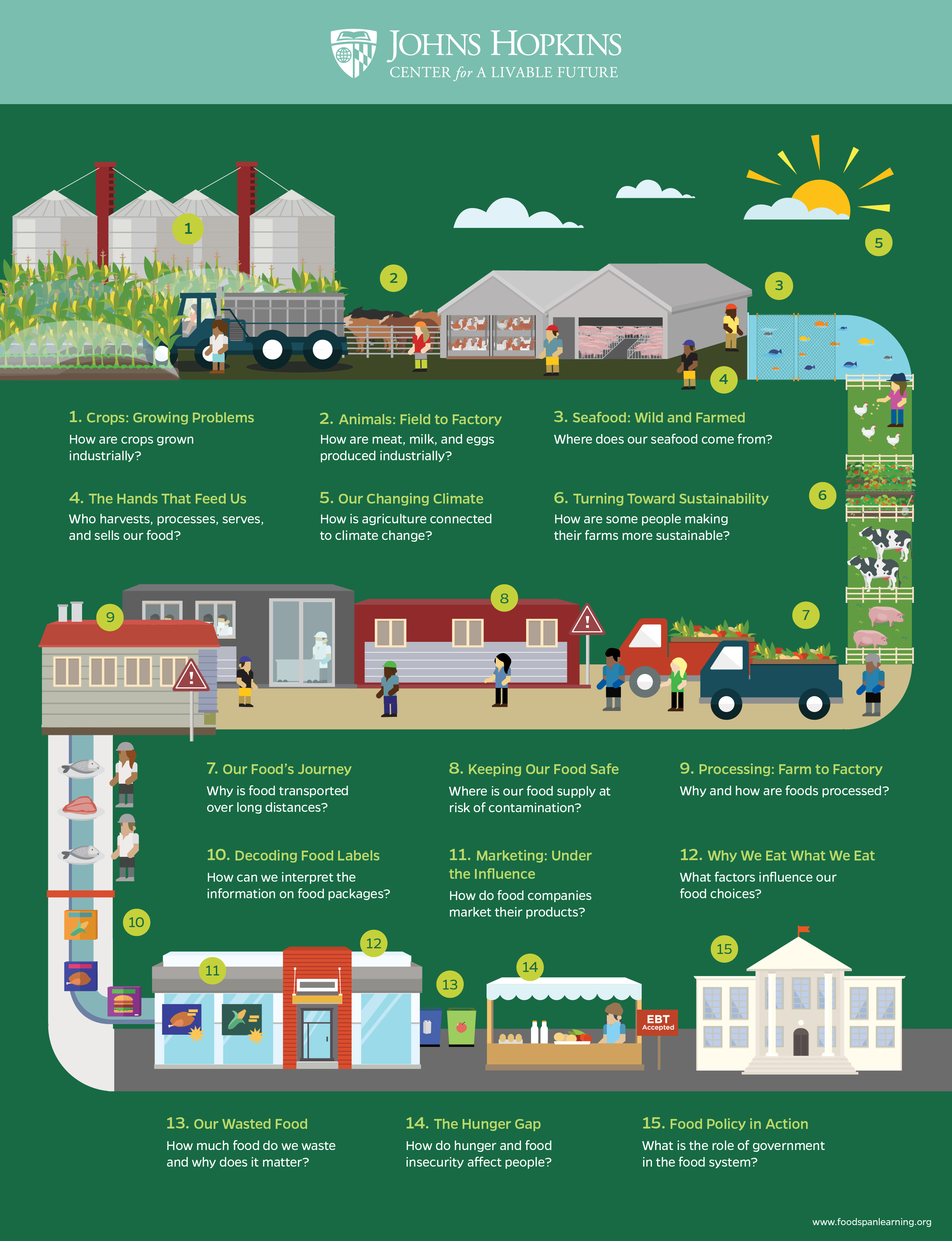Lesson Plans
Each of the 17 lessons includes a warm-up, one or more main activities, a reflection, and optional extensions that can serve as homework assignments or projects. FoodSpan is designed so teachers can work through the entire curriculum or teach lessons individually. Lessons are aligned with national education standards in science, social studies, health, and family and consumer sciences (see standards alignment chart).
Download the entire curriculum lesson plans, handouts, and slides.
This unit introduces students to the food system and provides an important overview of the topics covered in Units 2 and 3. Students will map out all of the food system's interconnected parts, consider their own relationship to the food system, and explore how it developed into the industrialized model we know today.
Unit 2: Farmers, Factories, and Food Chains
This unit explores how our food—from plants to animal products to seafood—is grown, harvested, processed, and distributed. Students will examine conventional industrial practices, explore sustainable alternatives, and consider the impact both have on human health and the environment.
Unit 3: Consumers and Communities
This unit examines how the food system affects consumers and communities. Once food is produced, factors such as marketing, labeling, socioeconomic status, and government policy influence what food people are able to eat and how it impacts their health.
Students will identify a food system problem and design an intervention to address it. This culminating project has students apply what they have learned from prior lessons, and empowers them to create change.


